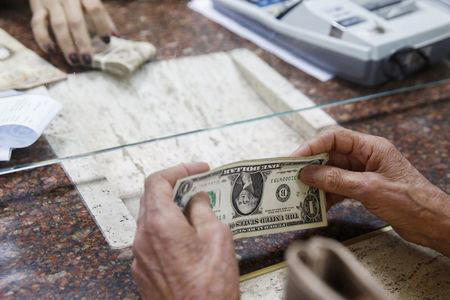The U.S. dollar’s stability in Monday’s trading session came amidst a backdrop of geopolitical calm in the Middle East and heightened anticipation surrounding the release of key economic indicators later in the week, particularly the Federal Reserve’s preferred measure of inflation. At 05:40 ET (09:40 GMT), the Dollar Index, which serves as a barometer of the greenback’s strength against a basket of six other major currencies, remained largely unchanged at 106.005, stepping back from the five-month peak of 106.51 observed in the previous week.
The dollar’s recent resilience followed a surge prompted by Israel’s missile attack on Iran, which escalated tensions in the already volatile Middle East. However, recent developments have seen a de-escalation, with Iran downplaying Israel’s retaliatory drone strike, signaling a move towards averting further conflict. Analysts at ING noted a positive sentiment across various asset classes at the beginning of the new week, as all parties involved sought to downplay the impact of Friday’s Israeli strikes on Iran.
In addition to geopolitical factors, the dollar’s strength has been bolstered by robust U.S. economic data and persistent inflationary pressures, coupled with hawkish remarks from Federal Reserve officials. This combination has tempered expectations of near-term interest rate cuts by the Fed. While Fed officials are expected to maintain a low profile this week ahead of the upcoming policy-setting meeting, market activity is anticipated to remain subdued as investors await Friday’s release of the personal consumption expenditures (PCE) price index, a crucial inflation metric favored by the Fed.
Turning to other economic indicators slated for release this week, investors will closely monitor the initial estimate of first-quarter GDP, data on new home sales and initial jobless claims, and revised figures on consumer sentiment and inflation expectations.
Meanwhile, in Europe, the euro managed to edge higher against the dollar, despite trading near six-month lows, as regional economic weakness is expected to prompt the European Central Bank (ECB) to implement interest rate cuts before the Federal Reserve.
In Asia, the Japanese yen faced downward pressure against the dollar ahead of the Bank of Japan’s rate decision on Friday, with investors eagerly anticipating signals regarding future policy changes. Additionally, the yuan encountered headwinds as the People’s Bank of China (PBOC) kept its benchmark loan prime rate unchanged, aiming to maintain loose monetary policy to bolster economic growth.
Overall, geopolitical developments, monetary policy decisions, and economic data releases are poised to remain key drivers shaping currency markets in the days ahead.
